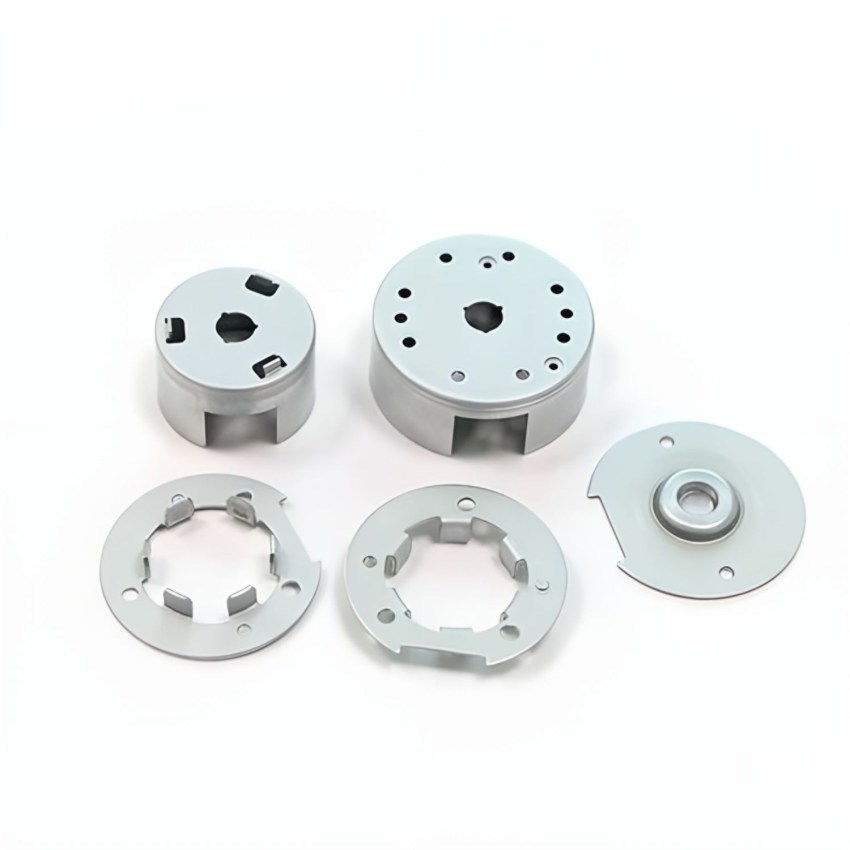From Concept to Creation: The Essential Role of CNC in Metal Fabrication
Release time:
2025-04-20
From Concept to Creation: The Essential Role of CNC in Metal Fabrication Table of Contents 1. Introduction to CNC in Metal Fabrication 2. What is CNC Machining? 3. The History of CNC Technology 4. Advantages of CNC in Metal Fabrication 5. Applications of CNC Machining in Industry 6. The CNC Fabrication Process Explained 7. Challenges and Considerations in CNC Machini

From Concept to Creation: The Essential Role of CNC in Metal Fabrication
Table of Contents
- 1. Introduction to CNC in Metal Fabrication
- 2. What is CNC Machining?
- 3. The History of CNC Technology
- 4. Advantages of CNC in Metal Fabrication
- 5. Applications of CNC Machining in Industry
- 6. The CNC Fabrication Process Explained
- 7. Challenges and Considerations in CNC Machining
- 8. The Future of CNC in Metal Fabrication
- 9. Conclusion
- 10. FAQs
1. Introduction to CNC in Metal Fabrication
In the realm of **metal fabrication**, the journey from a mere concept to a tangible product is paved with technological innovations. At the forefront of this evolution is **Computer Numerical Control (CNC)** technology, which has revolutionized how metal components are designed and manufactured. This article delves deep into the crucial role of CNC in metal fabrication, exploring its principles, historical context, advantages, applications, and future outlook.
2. What is CNC Machining?
CNC machining is a manufacturing process that utilizes computer-controlled tools to create precise parts and components from various materials, predominantly metals. The **CNC system** interprets a **computer-aided design (CAD)** file, translating it into code that commands the machinery to cut, shape, and finish metal pieces with exceptional accuracy. By automating the manufacturing process, CNC machining significantly reduces human error and enhances production efficiency.
Understanding the Basics of CNC Technology
CNC machining operates through a series of processes that include milling, turning, and drilling. Each process involves the use of specific tools and techniques. The precision of CNC machines stems from their ability to execute complex designs with minimal operator intervention, which promotes consistency across multiple runs.
3. The History of CNC Technology
The roots of CNC technology can be traced back to the 1940s and 50s when engineers began developing early forms of numerical control using punched tape to guide machine tools. The transition to **CNC** began in the 1960s with the advent of computers. This technological leap allowed for more sophisticated programming and control, ultimately leading to the advanced CNC systems we see today.
Milestones in CNC Development
- **1940s**: Introduction of numerical control; early machines operated using punched cards.
- **1960s**: The first CNC machines were created, integrating computers for improved control.
- **1980s**: Growth in software development for CAD and CAM, enhancing the design and manufacturing process.
- **2000s and beyond**: CNC technology became more accessible, with advancements in automation and smart manufacturing.
4. Advantages of CNC in Metal Fabrication
CNC machining presents a plethora of benefits that make it an indispensable tool for metal fabrication. These advantages can be grouped into several key categories:
Enhanced Precision and Accuracy
CNC machines are capable of producing complex shapes and intricate designs with a high degree of precision. This accuracy results in better-fitting components, reducing waste and the need for rework.
Increased Efficiency and Speed
Automation in CNC machining accelerates production times significantly. Tasks that would take hours or days using traditional methods can be completed in a fraction of the time, allowing businesses to meet tight deadlines.
Consistency and Reproducibility
Once a design is programmed into the CNC system, it can be replicated countless times without deviation, ensuring uniformity across all produced items.
Flexibility in Design
CNC technology allows for rapid changes to designs without extensive modifications to the machinery, making it easier to adapt to new projects or customer requirements.
Cost-Effectiveness
While the initial investment in CNC machinery may be high, the long-term savings from reduced labor costs, minimized waste, and shorter production times make it economically advantageous.
5. Applications of CNC Machining in Industry
The versatility of CNC machining means it is utilized across a wide array of industries. Some prominent applications include:
Aerospace Industry
CNC machining plays a crucial role in producing lightweight and durable components for aircraft. The high precision required in this industry makes CNC an ideal choice for fabricating parts like engine components and control surfaces.
Automotive Manufacturing
In automotive production, CNC machines are used to create intricate parts such as engine blocks, chassis components, and transmission housings, all of which require high precision and durability.
Medical Equipment Production
CNC technology is essential in the manufacturing of medical devices and instruments, where precision is paramount for both functionality and patient safety.
Consumer Products
From electronics housings to furniture components, CNC machining is widely used in creating consumer products that require high-quality finishes and customized designs.
6. The CNC Fabrication Process Explained
The CNC fabrication process involves several distinct steps, each crucial for achieving the final product.
Design Phase
The fabrication journey begins with creating a detailed CAD model of the desired part. This model serves as the blueprint for the CNC machine.
Programming
The CAD design is converted into a format that CNC machines understand, typically using Computer-Aided Manufacturing (CAM) software. This step generates the G-code, which dictates the machine's movements.
Material Selection
Choosing the right material is critical. Factors such as strength, weight, and cost will influence the selection of metals for the project.
Machining
The CNC machine executes the programmed commands, cutting and shaping the material as per the design specifications. This step may involve various techniques like milling, turning, and drilling.
Finishing
Post-machining processes ensure the final product meets quality standards. This may include sanding, polishing, or coating to enhance surface quality and durability.
7. Challenges and Considerations in CNC Machining
While the benefits of CNC machining are substantial, several challenges must be addressed:
High Initial Costs
Investing in CNC machines and the associated software can be expensive, which may deter smaller businesses from adopting this technology.
Skilled Labor Requirement
Although CNC machines reduce the need for manual labor, skilled operators and programmers are still needed to oversee the process and ensure optimal performance.
Maintenance and Downtime
Regular maintenance is essential to ensure CNC machines operate efficiently. Downtime due to repairs can affect productivity and profitability.
Design Limitations
Certain designs may be difficult or impossible to execute with CNC machines, particularly those requiring complex geometries or very tight tolerances.
8. The Future of CNC in Metal Fabrication
The future of CNC machining is promising, with several trends poised to shape its evolution:
Integration of AI and Automation
Artificial intelligence (AI) is increasingly being integrated into CNC systems, allowing for smarter manufacturing processes that can adapt in real-time to changes in production demands.
Advancements in Materials
As new materials emerge, CNC technology will evolve to accommodate their unique properties, expanding the possibilities for metal fabrication.
Sustainability Practices
There is a growing emphasis on sustainability in manufacturing. CNC machining can contribute to this by reducing waste and optimizing material use, aligning with industry trends towards greener practices.
Remote Monitoring and Control
The advent of the Internet of Things (IoT) will enable remote monitoring and control of CNC machines, enhancing efficiency and reducing the need for on-site supervision.
9. Conclusion
The journey from concept to creation in metal fabrication has been profoundly transformed with the introduction of CNC technology. Its ability to enhance precision, efficiency, and flexibility makes CNC machining an invaluable asset for various industries. As we look to the future, the integration of advanced technologies such as AI and IoT promises to further enhance the capabilities of CNC systems, ensuring that the industry continues to innovate and evolve.
10. FAQs
What is the primary advantage of CNC machining over traditional methods?
The primary advantage is the **precision** and **consistency** CNC machining offers, which reduces waste and enhances production efficiency.
What industries benefit the most from CNC technology?
Industries such as **aerospace**, **automotive**, **medical equipment**, and **consumer products** benefit significantly from CNC technology.
How does CAD software integrate with CNC machining?
CAD software allows designers to create detailed models that are then converted into G-code for the CNC machines to follow.
Are there any limitations to CNC machining?
Yes, certain complex designs may be challenging to achieve with CNC machining, and the initial investment can be high.
What is the future trend of CNC technology?
Future trends include the integration of **AI**, **remote monitoring**, and a focus on **sustainable practices** in manufacturing.
This detailed exploration of the role of CNC in metal fabrication not only highlights its importance but also sets the stage for understanding its ongoing evolution in the manufacturing landscape.
Key words:




